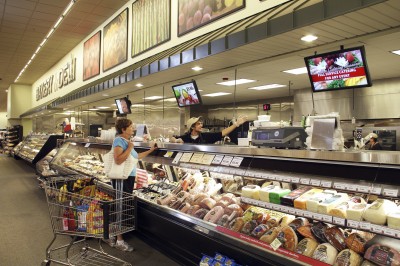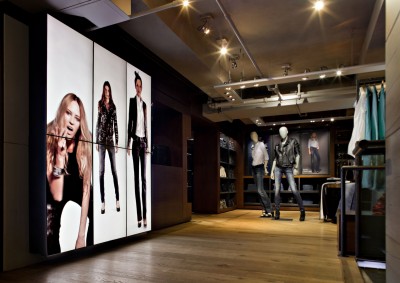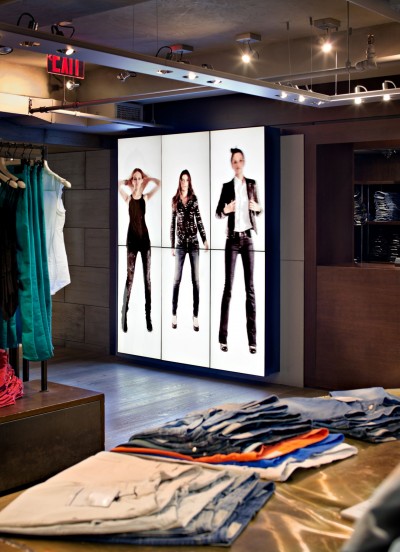By Richard Ventura
While digital signage has frequently been deployed in a variety of retail applications—in such forms as video-enhanced menu boards in restaurants, dynamic ‘end caps’ in electronics stores, directory boards in malls and even ‘virtual mannequins’ in clothing stores—the true potential of the medium has yet to be tapped, in terms of full customer engagement through interactivity.
Retailers have typically used digital signage only as a vehicle for advertising products and services, with very little or no integration with other in-store systems. Some have focused on connecting digital signage with inventory databases and point-of-sale (POS) systems to help capture and mine consumer data to better align their activities with their customers’ preferences.
At the same time, other retailers have installed kiosks that support online ordering, guest registry access and even the hiring of new employees. Many of these systems, however, have missed out on capturing customer interactions to create fuller engagement between the consumer and the brand.

Some retailers are using ‘passive’ interaction, whereby digital signs inform customers when their orders are ready and, while they wait, they are a captive audience for cross-marketing.
Today, when young children encounter a computer screen, they naturally expect it to be interactive. This is a noteworthy barometer that should give all retailers pause. The touch-screen mentality is so ingrained in this generation, it has provided the foundation for a digital interactive society.
Types of engagement
The interaction and engagement can be passive, active or mobile. Some quick-service restaurants (QSRs), for example, have deployed ‘order-ready’ boards, which inform patrons after their meals have been prepared in the kitchen; this is a fairly passive form of interaction. And while customers wait for their food, they are a captive audience for the cross-marketing and upselling of various goods and services.
Other QSRs have deployed customer-facing kiosks, whereby people can learn about special offers and place their orders without any need for human interaction. These are a much more active form of interaction, with greater potential to increase sales and efficiency.
There are also interactive wayfinding kiosks in some hotels, airports, shopping malls, department stores and other large facilities. These multi-function systems can allow customers to purchase goods and services, print out maps and coupons and/or make dinner reservations. Even if a customer only engages with the kiosk for a few seconds, the experience better connects him/her to the brand.
To extend further into mobile engagement, some businesses are letting customers use their smart phones and tablet computers as tools for interacting with in-store digital screens, kiosks, end caps or video walls. Some of the biggest QSR chains have created mobile apps, for example, that allow customers to check calorie counts while ordering food items, as well as use near field communication (NFC) technology to scan Quick Response (QR) codes and download coupons before making a purchase.
Some retailers are using these types of apps to create a virtual ‘store-within-a-store’ concept, whereby customers can pull up reviews, check inventories, place orders and, in some cases, ‘test drive’ a product, all through their smart phone or tablet.







